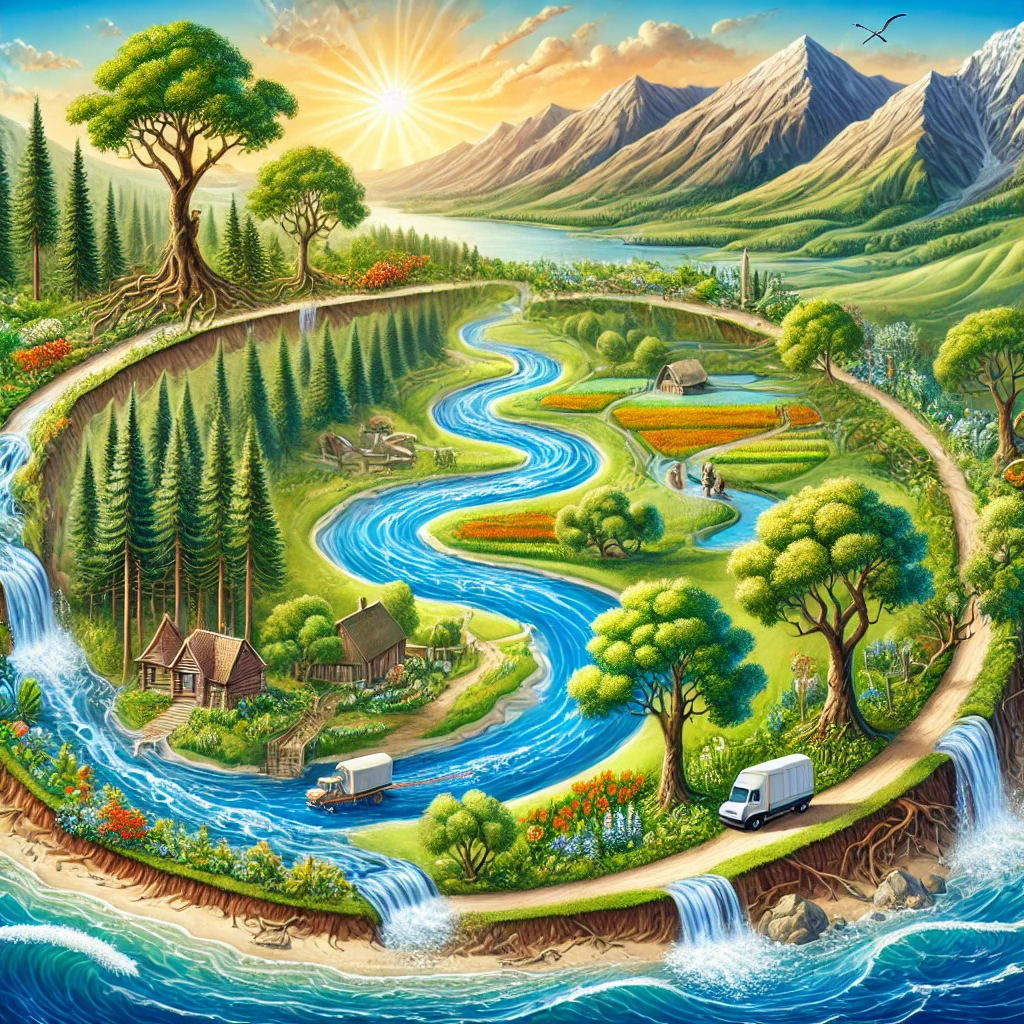Rivers are the lifelines of our planet, shaping landscapes and sustaining ecosystems as they flow from their sources high in the mountains to their eventual destinations in the oceans. The journey of a river, known as its life cycle, is a fascinating tale of erosion, deposition, and the continuous movement of water. Understanding the stages of a river’s life cycle helps us appreciate its role in the environment and the interconnectedness of natural processes.
1. The Source: Birth of a River
Every river begins its journey at a source, typically a place where water emerges from the ground or flows from a melting glacier. Sources can be springs, lakes, or even rain-fed pools high in the mountains. The water at the source is often pure and cold, carrying minerals and nutrients picked up from the rocks it passes over. This pristine water marks the beginning of the river’s long voyage.
2. Youthful Stage: Erosion and Downcutting
As the river starts its descent from the source, it enters its youthful stage characterized by rapid flow and steep gradients. During this phase, the river erodes the landscape, cutting into the rock and soil to form a V-shaped valley. The erosive power of the water is immense, especially during times of high flow such as snowmelt or heavy rain. The river transports sediment downstream, creating a dynamic environment where new habitats can form.
3. Mature Stage: Meandering and Floodplains
In its mature stage, the river has a more gradual gradient and begins to meander across the landscape. Meanders are bends in the river’s course caused by the erosive and depositional forces acting on its banks. Over time, meanders migrate and change shape, creating oxbow lakes and fertile floodplains. Floodplains are crucial for agriculture and biodiversity, as they are periodically flooded with nutrient-rich sediment that supports diverse plant and animal life.
4. Old Age: Delta Formation and Estuarine Systems
As the river nears the end of its journey, it enters its old age characterized by low gradients and sluggish flow. Here, the river deposits the sediment it has carried from upstream, forming a delta where it meets a larger body of water, such as an ocean, sea, or large lake. Deltas are dynamic and productive ecosystems that support fisheries and provide protection against coastal erosion. The mixing of freshwater and saltwater in estuarine systems creates unique habitats for marine life and migratory birds.
5. The Endless Cycle: Water and the Environment
Throughout its life cycle, a river plays a vital role in shaping the environment and influencing human activities. It provides water for drinking, agriculture, and industry, while also serving as a transportation route and source of renewable energy through hydropower. Rivers support diverse ecosystems, from mountain streams teeming with trout to tropical rivers inhabited by river dolphins and crocodiles.
Conclusion: Preserving Our Rivers for Future Generations
The life cycle of a river is a reminder of the interconnectedness of natural processes and the importance of conservation and sustainable management. Human activities such as dam construction, pollution, and deforestation pose significant threats to rivers and their ecosystems. By understanding and appreciating the stages of a river’s life cycle, we can better protect and restore these valuable resources for future generations.
Rivers continue to inspire awe and wonder, shaping cultures and societies as they have done throughout history. As stewards of the environment, it is our responsibility to ensure that rivers remain healthy and vibrant, supporting biodiversity and providing essential services to ecosystems and communities alike.
In conclusion, the journey of a river from its source to the sea is a testament to the power of water and the resilience of nature. By preserving and respecting our rivers, we safeguard not only the health of our planet but also the well-being of future generations who will depend on these precious waterways for their survival and prosperity.
